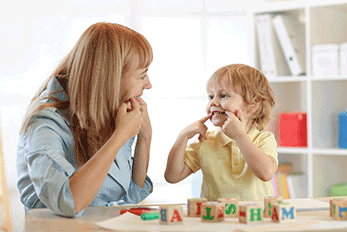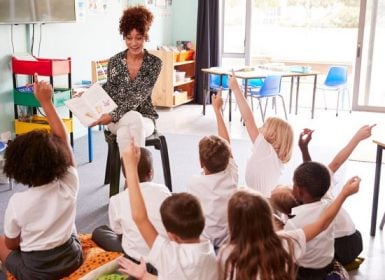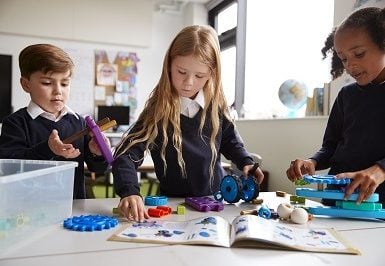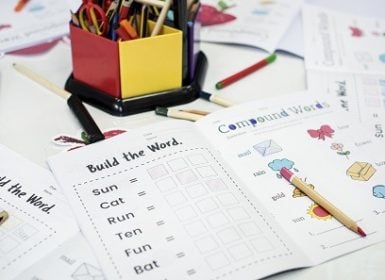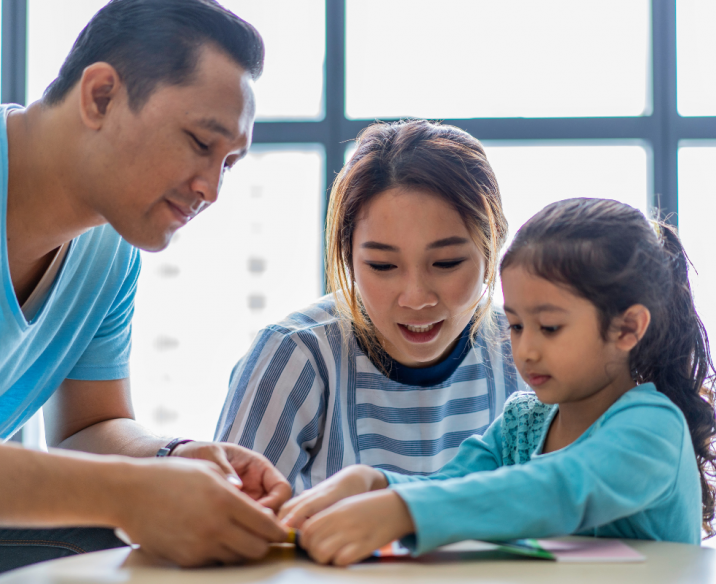
It is increasingly important to understand the importance of supporting bilingual children in early childhood. Australia is a country increasingly made up of people speaking different languages so it is vital that we understand how we can support English as a second language in children.
Types of Bilingualism
There are many definitions of bilingualism; however, most people define it as using two languages on a regular basis.
The extent to which a person is bilingual can vary. Some people are equally proficient in two languages across a range of contexts and this is often referred to as ‘balanced bilingualism’. More often, when people are bilingual, one of the languages is used more often and with greater proficiency. This may be referred to as ‘dominant bilingualism’.
There are also people who understand and use three or more languages and may be referred to as ‘multilingual’.
This article focuses on supporting children who are acquiring two languages in early childhood settings.
Acquiring More Than One Language
A child can acquire more than one language in two main ways. Simultaneous acquisition is when a child learns two languages at the same time, for example is a child is growing up in a bilingual household.
The second is sequential acquisition – when the second language is learnt after the first – for example when a child already knows one language but learns a second at school.
Understanding the different ways a child can learn a second language can help in supporting bilingual children in early childhood.
Myths Surrounding Bilingualism
There are many myths associated with bilingualism and they’re important to know when figuring out the best way for supporting bilingual children.
Myth: Delays in language are caused by learning a second language.
This is not true. Like any other child, a child who is bilingual can have language delays, but learning a second language neither increases nor decreases the chances of having a language delay.
Myth: It is easier to learn a second language if you stop using your first or home language and concentrate on the new language.
The truth is that the stronger the first language is, the easier it is to learn a second language.
Myth: Parents should stop using the first or home language when the child begins speaking a second language such as English.
In fact, the best way for families to support bilingual children is to maintain the child’s first language at home. Parents don’t have to talk in English to help their child learn English.
It is more important that parents use the language that they can use best and are the most comfortable speaking. When they do this they can provide models of grammatically correct sentences and access to a wide vocabulary.
Parents should therefore continue to use their first language to talk to their child about everyday activities such as shopping, and share poems, stories, songs, books and games. It can also help if parents use the name of the language (for example, Mandarin or Cantonese), when speaking in this language to their child.
Factors Affecting Learning English as a Second Language
There are a number of factors that influence the rate of acquisition of English as a second language. These include:
- The length of time exposed to English;
- The extent of the exposure to English;
- The age of the child when they are first exposed to English;
- The ways in which the child is exposed to English;
- The similarities and differences between English and the home language;
- The acceptance and value given to English and the mother language;
- Individual characteristics within families – their strengths, needs and support; and
- Individual characteristics of the child (including personality, confidence and learning styles) that may influence their willingness and readiness to interact with others and try to use their new language.
What to Expect When Children are Learning a Second Language
Understanding how children react to learning English as a second language goes a long way in being able to play a role supporting bilingual children.
Many children become silent when first exposed to a second language. This silent period can last months and can be important in developing understanding. During this period it is important to allow children time to just observe without pressure to speak.
At this time, children often rely on adults around them and on non-verbal cues in the environment; for example, adults pointing to what they are talking about or asking the child to do. They also often follow other children and imitate them.
It is not unusual for bilingual adults to switch between languages within a sentence and this can in fact enhance communication. Similarly, it is normal for children who are learning a new language to mix the two languages when making sentences.
Children who are learning English often begin by using short social phrases; for example, “my turn”, “chase me”, “help me”. They usually find these phrases easy to use and often get positive results from other children and adults.
Identifying Language Delays
It can be a challenging and complex task determining whether a child acquiring a second language has a language delay or is just in the process of learning English (perhaps at a slow rate).
If a child has a language delay, they will have a delay in both languages. When there are concerns about a child’s language development in either language, or their rate of acquisition of a second language, it is advisable to seek advice or an assessment.
At such an assessment, information will be sought about what languages are spoken at home and how the child’s first language developed. This will include information about the child’s ability to understand what is said, use words, construct sentences, and use different languages to communicate with different adults, as well as some information about the child’s social development.
There are some bilingual speech pathologists who can assess a child in languages other than English. Speech Pathology Australia has a list of private speech pathologists who are bilingual. A bilingual speech pathologist may also be accessed through local or government services.
Being bilingual does not increase or decrease the chance of having a language delay. Just as there are children who speak one language and have a language delay, there are also bilingual children who have a delay.
Supporting Bilingual Children in Early Childhood Settings
There is no single approach that will work for all bilingual children, or children learning a second language. Workers in early childhood settings can support children by finding out all that they can about them, their families and their culture.
It is important that the child’s first language is acknowledged, as well as its continued use at home. It is similarly important to observe what children are interested in, and what motivates them, so these activities or experiences can be included in early childhood programmes.
If early childhood workers know more about what to expect when children are learning a second language, they can have appropriate expectations. By knowing, for example, that some children will go through a silent period, they can recognise this stage and not pressure children to speak.
For many children, having an adult to support them during this silent period can help develop their understanding of the second language. If children are showing signs of being ready to join in activities, early childhood staff can encourage them, provide support and praise them.
As in all early childhood settings, children will learn through play, routines, books, games and songs. As part of these activities, staff can support language development by modelling and repeating meaningful words and phrases (for example, ‘wash hands’, ‘come play’). Using gesture and visual materials such as photographs can also greatly assist children’s understanding of language and their acquisition of words.
Children learning a second language can also be included in non-language activities (for example, picture matching) and activities that stimulate a range of senses (for example, water play). These activities allow children to demonstrate their competencies and participate without language. They also provide opportunities to interact with peers, who can also assist when children are learning a second language.
Children can vary markedly in their willingness to initiate, attempt and take risks. By tuning in to children’s strengths and needs, early childhood workers can help children’s communication to be a positive and rewarding experience.
More Resources
Subscribe to Learning Links
In our free monthly eNewsletter, you’ll receive interesting articles on learning, development and wellbeing, tips for supporting children at home or at school, program and online learning updates and the latest news from the Learning Links team.

